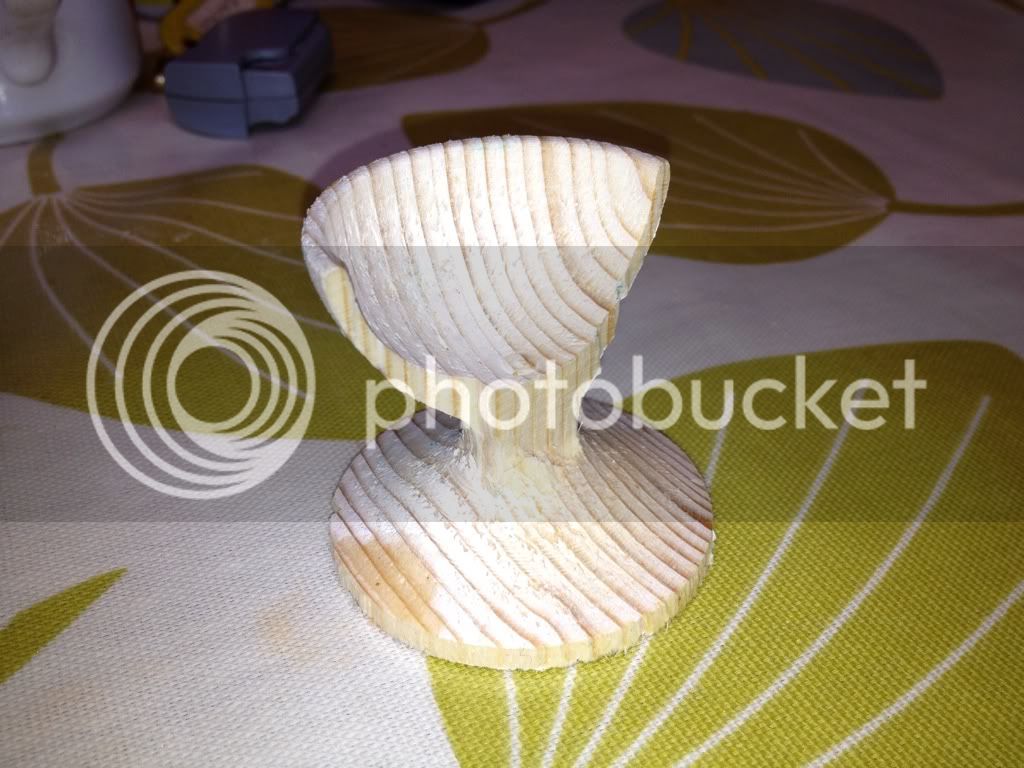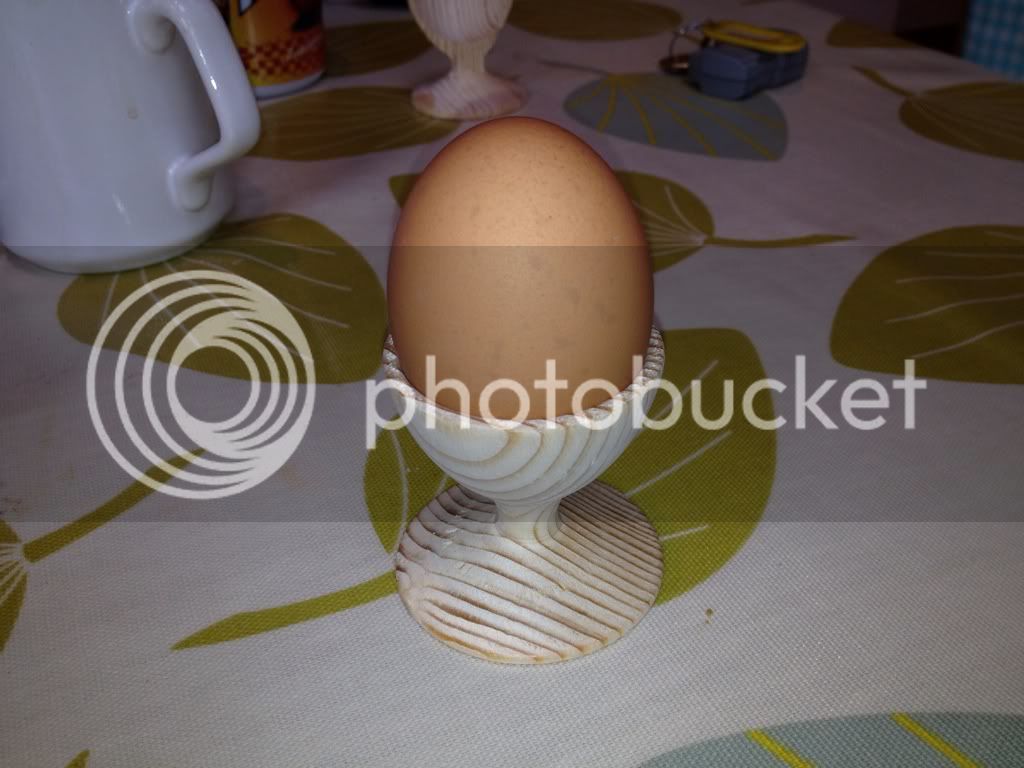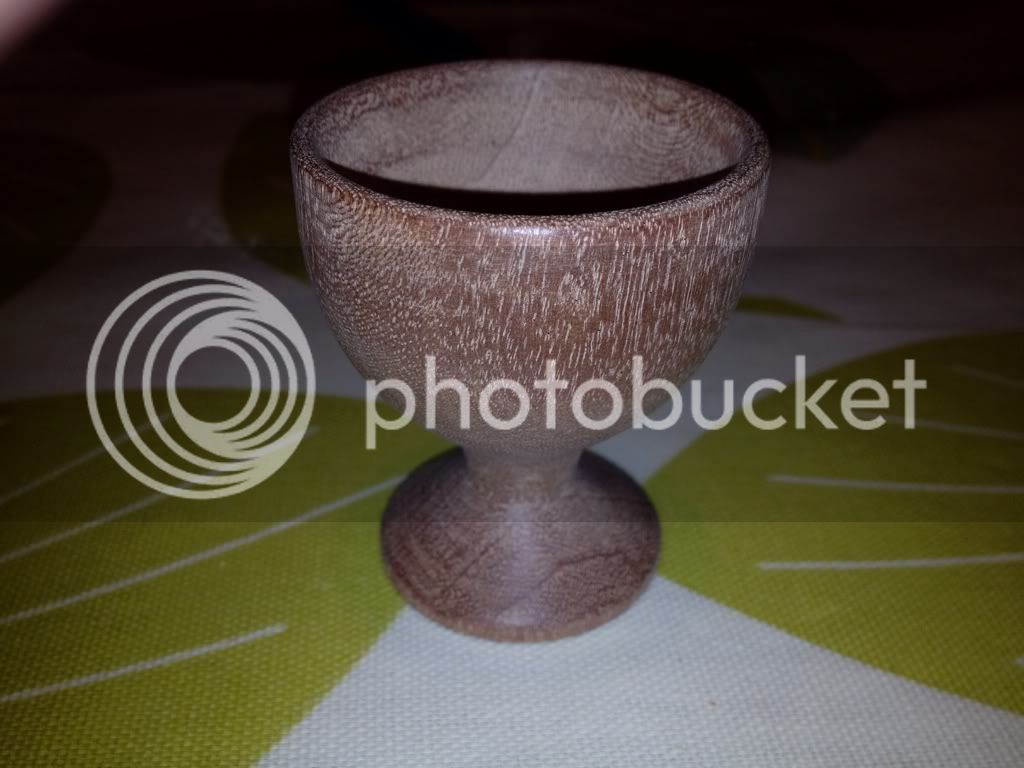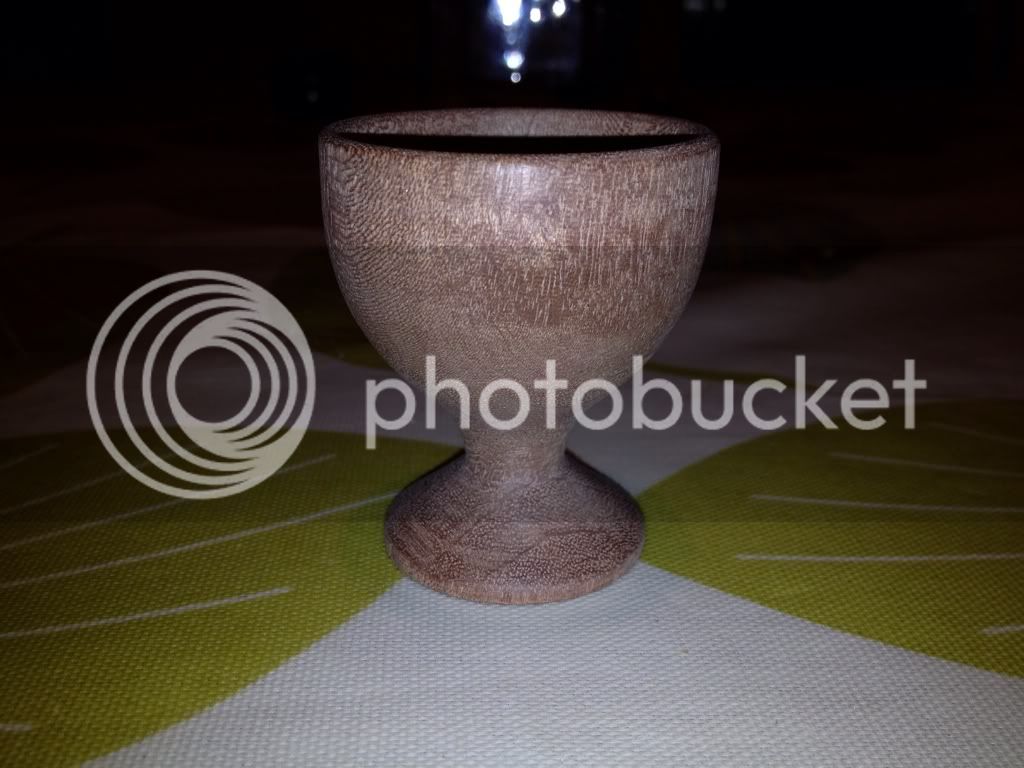Finally managed to get a couple of hours workshop time this morning, so figured I would give the O'Donnell jaws that I got at Xmas a try.
For my first ever go at hollowing, I thought an egg cup would be ideal, so I dug out some old pallet pine (all I've got) and set to work.
Lots of catches later, I got the following, which just as I was about done, suffered a fatal catch.

This is the second attempt:

Still a bit rough, but better.
My main problem seems to be starting hollowing cuts with the bowl gouge. The scraper saved me..
Si
For my first ever go at hollowing, I thought an egg cup would be ideal, so I dug out some old pallet pine (all I've got) and set to work.
Lots of catches later, I got the following, which just as I was about done, suffered a fatal catch.

This is the second attempt:

Still a bit rough, but better.
My main problem seems to be starting hollowing cuts with the bowl gouge. The scraper saved me..
Si



































